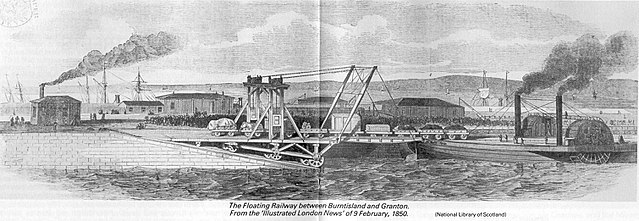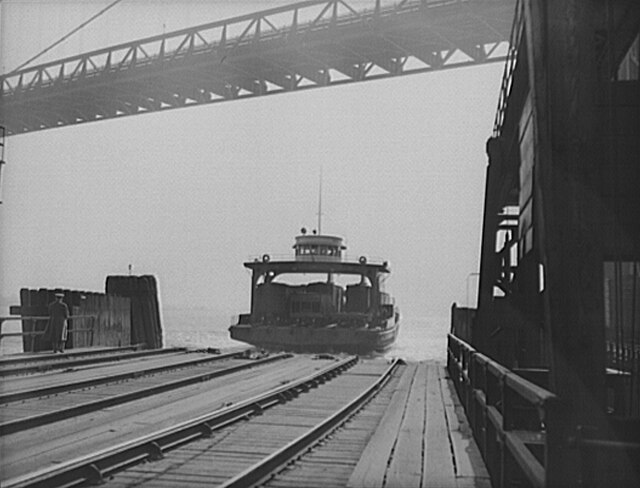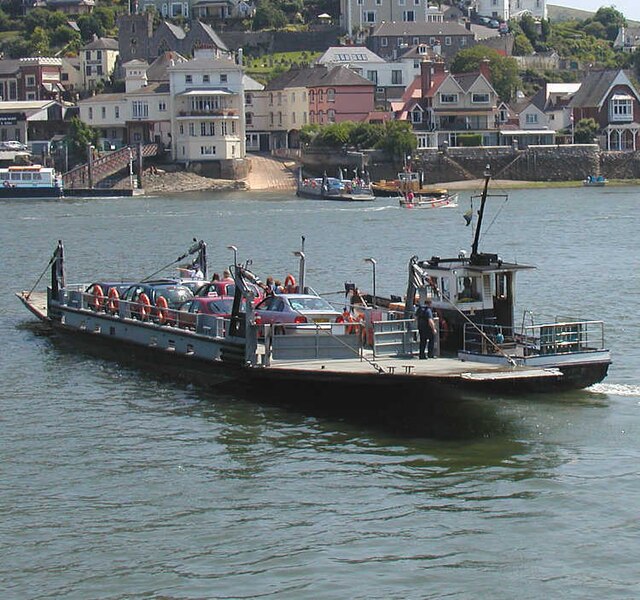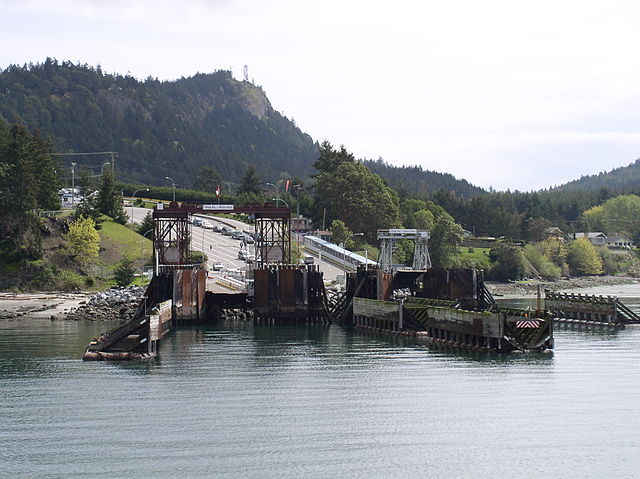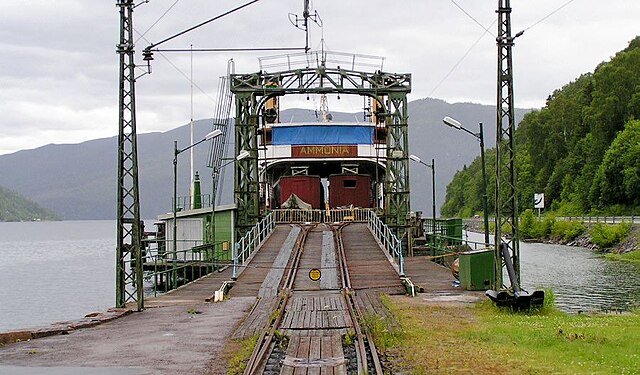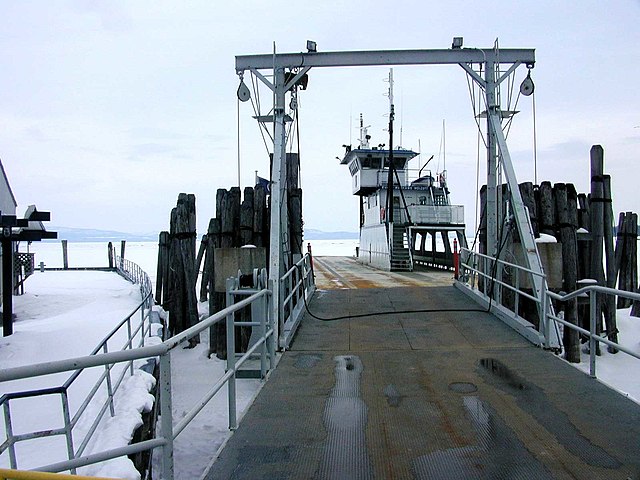A train ferry is a ship (ferry) designed to carry railway vehicles. Typically, one level of the ship is fitted with railway tracks, and the vessel has a door at the front and/or rear to give access to the wharves. In the United States, train ferries are sometimes referred to as "car ferries", as distinguished from "auto ferries" used to transport automobiles. The wharf has a ramp, and a linkspan or "apron", balanced by weights, that connects the railway proper to the ship, allowing for tidal or seasonal changes in water level.
Interior of a roll-on roll-off train ferry in Villa San Giovanni, Italy
The 'Floating Railway', opened in 1850 as the first roll-on roll-off train ferry in the world.
Bouch's ferry design. Note the adjustable ramp of the Granton train ferry.
Loaded train ferry approaches dock in Detroit, Michigan, United States in April 1943.
A ferry slip is a specialized docking facility that receives a ferryboat or train ferry. A similar structure called a barge slip receives a barge or car float that is used to carry wheeled vehicles across a body of water.
Tug-propelled Dartmouth ferry barge with integral ramp at each end
BC Ferries Dock seen from the ship about to dock
Two track rail apron and Tinnsjø railway ferry SF Hydro
Automobile apron and ferry of the Lake Champlain Transportation Company


